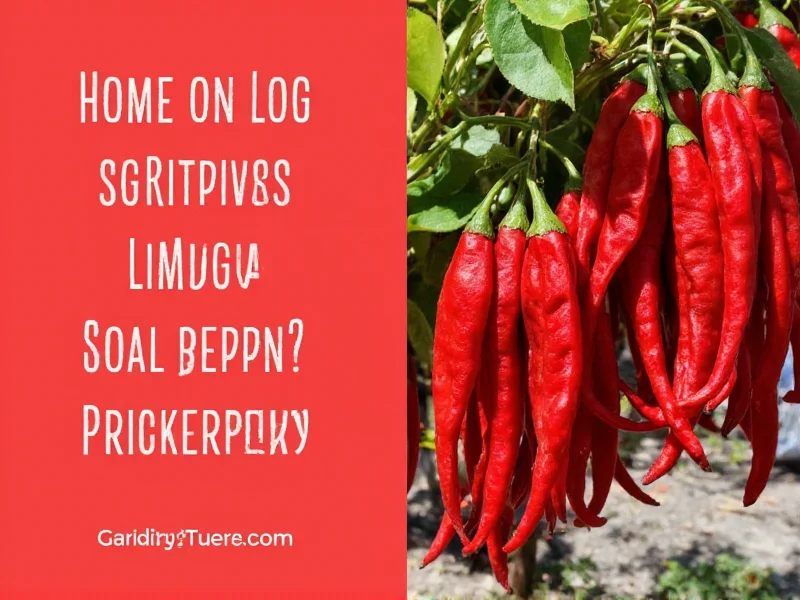Understanding the shelf life of dried peppers is essential for home cooks, gardeners, and food preservation enthusiasts. While dried peppers don't technically spoil in a way that makes them unsafe to eat (unless contaminated with mold), they gradually lose potency, flavor, and color over time. The key to maximizing their shelf life lies in proper storage techniques and understanding the factors that affect their longevity.
Factors That Determine Dried Pepper Shelf Life
Several variables influence how long your dried peppers will maintain optimal quality:
Pepper Variety and Form
Whole dried peppers last significantly longer than crushed or powdered versions. The increased surface area in crushed peppers accelerates flavor and color degradation. Thick-walled peppers like bell peppers dry differently than thin-walled varieties like cayenne, affecting their storage potential.
Moisture Content
Properly dried peppers should contain less than 10% moisture. Inadequately dried peppers retain enough moisture to develop mold during storage. Always ensure peppers are crisp with no flexible sections before storing.
Storage Container Quality
Airtight containers prevent moisture absorption and protect against pantry pests. Glass jars with tight-sealing lids outperform plastic containers, which can develop microscopic cracks over time.
| Storage Method | Whole Peppers | Crushed/Flaked | Ground Powder |
|---|---|---|---|
| Pantry (room temperature) | 1-2 years | 6-12 months | 3-6 months |
| Refrigerator | 2-3 years | 1-1.5 years | 6-12 months |
| Freezer | 3+ years | 2+ years | 1-2 years |
Optimal Storage Techniques for Maximum Longevity
Follow these evidence-based methods to extend your dried peppers' shelf life:
Container Selection
Use amber or cobalt glass jars to block light exposure, which degrades capsaicin (the compound responsible for heat). Vacuum-sealed containers provide the best protection against oxygen exposure. For long-term storage, include oxygen absorbers specifically designed for food preservation.
Environmental Considerations
Store dried peppers in a consistently cool location (below 70°F/21°C) with minimal temperature fluctuations. Basements often provide ideal conditions if they remain dry. Avoid storing near stoves, ovens, or dishwashers where heat and humidity fluctuate.
Moisture Control
Include food-safe desiccant packets in storage containers to absorb any residual moisture. Check containers quarterly for condensation, which indicates inadequate drying or compromised seals. Never store dried peppers in areas with relative humidity above 60%.
Identifying When Dried Peppers Have Degraded
While dried peppers rarely become unsafe, they lose culinary value over time. Recognize these signs of degradation:
- Color changes: Vibrant reds fading to dull brown indicates significant flavor loss
- Texture issues: Flexible or leathery texture suggests moisture absorption
- Mold presence: Any visible mold means immediate disposal
- Odor changes: Musty or stale smells indicate spoilage
- Flavor test: Reconstituted peppers should have pronounced heat and flavor
Practical Tips for Extending Dried Pepper Shelf Life
Implement these professional techniques to maximize your dried peppers' usability:
- Freeze before long-term storage: Place thoroughly dried peppers in the freezer for 48 hours to eliminate any insect eggs before final storage
- Portion control: Divide large batches into smaller containers to minimize air exposure when accessing
- Label everything: Note the drying date and pepper variety on each container
- Re-crisp stale peppers: Briefly toast slightly flexible peppers in a 200°F oven before re-drying
- Monitor regularly: Check stored peppers quarterly for quality changes
Reviving Aged Dried Peppers
If your dried peppers have lost some potency but show no signs of spoilage, try these revival methods:
Soak peppers in warm water for 20-30 minutes to rehydrate before use in sauces or stews. For ground peppers that have lost heat, combine with fresh dried peppers in a 1:1 ratio to boost flavor. Toast whole aged peppers in a dry skillet for 1-2 minutes to temporarily enhance aroma before grinding.
Special Considerations for Different Pepper Types
Thick-walled peppers like poblanos require more thorough drying than thin-skinned varieties like Thai chilies. Sweet peppers generally have shorter shelf lives than hot varieties due to higher sugar content. Specialty peppers like chipotles (smoked jalapeños) maintain unique flavor compounds longer than non-smoked varieties when stored properly.











 浙公网安备
33010002000092号
浙公网安备
33010002000092号 浙B2-20120091-4
浙B2-20120091-4